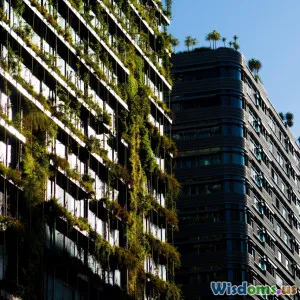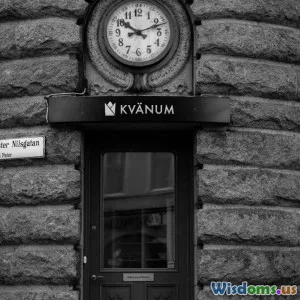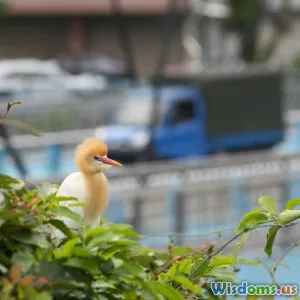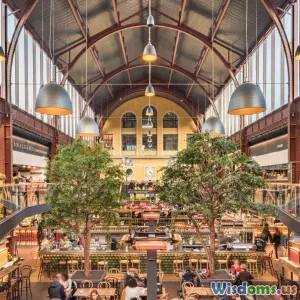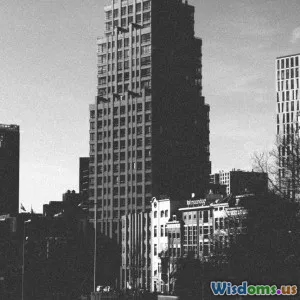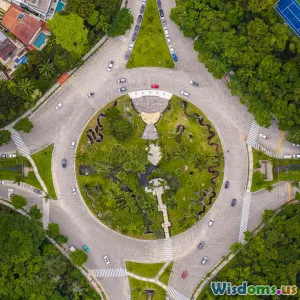
Urban Heat Islands Are There Design Solutions That Actually Work
8 min read Exploring effective design solutions to combat urban heat islands and improve city livability. (0 Reviews)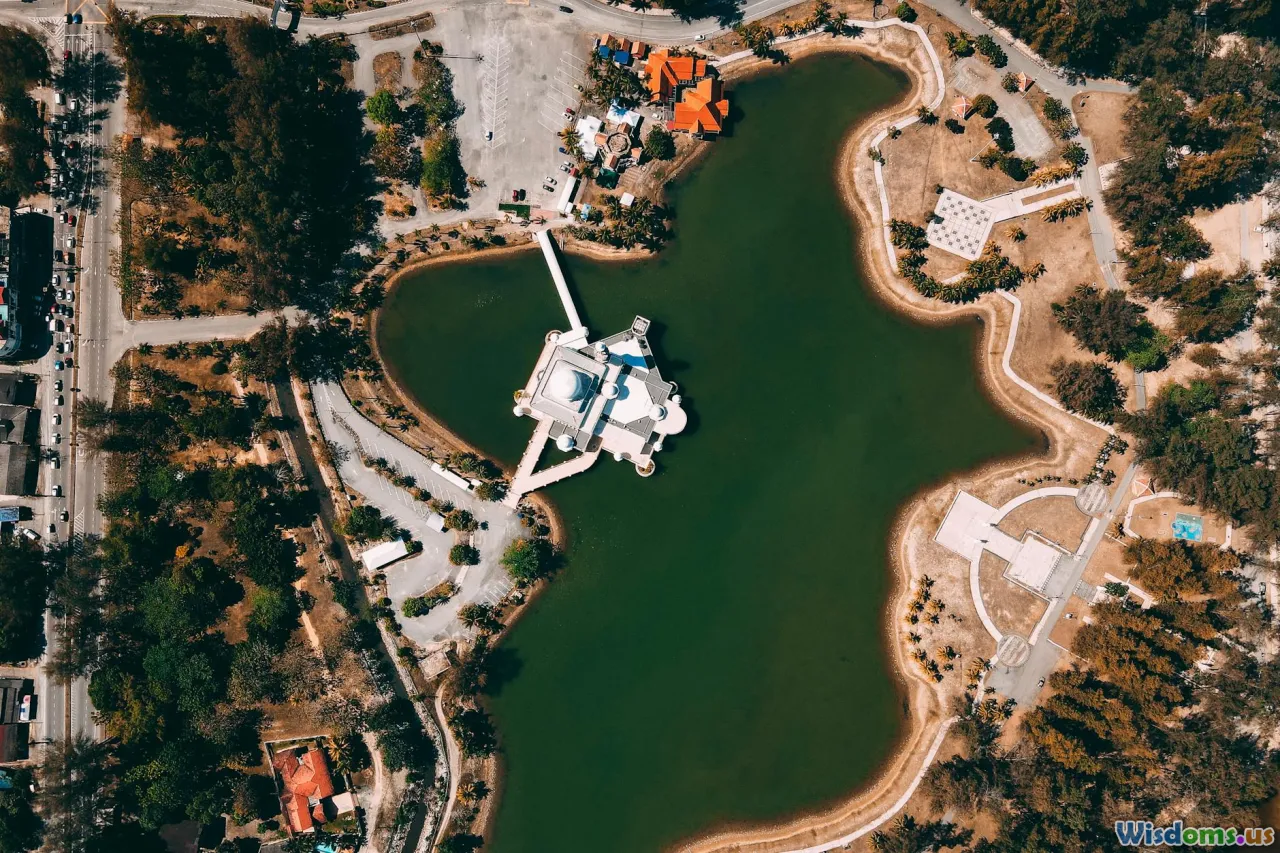
Urban Heat Islands: Are There Design Solutions That Actually Work?
Urban heat islands (UHIs) are more than just an inconvenient name—they represent a pressing challenge for cities worldwide. Characterized by significantly higher temperatures in densely built urban areas compared to their rural surroundings, UHIs exacerbate overheating, contribute to energy overuse, and imperil public health. With climate change amplifying heatwaves, finding effective design solutions is critical.
This article delves deeply into what urban heat islands are, why they matter, and, importantly, what design strategies have demonstrated tangible results.
Understanding Urban Heat Islands: More Than Just Hot Cities
Urban heat islands occur because urban areas absorb and retain heat more than natural landscapes. Widespread concrete, asphalt, and other impermeable surfaces absorb sunlight during the day and radiate heat at night, often raising city temperatures by 1 to 7 °F (0.6 to 3.9 °C).
Key factors include:
- Reduced vegetation: Less greenery means diminished shading and evaporative cooling.
- Dark surfaces: Asphalt and roofing materials absorb more solar radiation.
- Waste heat emission: Air conditioning and vehicles discharge extra heat into the environment.
According to the Environmental Protection Agency (EPA), these elevated temperatures can worsen air quality, raise energy consumption due to increased cooling demands, and threaten vulnerable populations such as children, elderly, and those with respiratory ailments.
Proven Design Solutions for Combatting Urban Heat Islands
1. Green Infrastructure: The Power of Vegetation
One of the most effective tools against UHIs is incorporating vegetation into the urban fabric. Trees and plants cool through shading and evapotranspiration—the process where plants release moisture, which cools the surrounding air.
- Tree Planting: Studies like those in Nature Communications show that cities with substantial tree canopy cover can reduce summer temperatures by up to 4 °C (7.2 °F) locally.
- Green Roofs: By covering rooftops with plants, cities can reduce surface temperatures by over 30 °F (16.7 °C).
- Urban Parks: Large parks and green corridors reinforce natural cooling. For example, New York City’s MillionTreesNYC initiative has planted over a million trees, measurably reducing neighborhood temperatures.
2. Cool Pavements and Roofing Materials
Traditional black asphalt can reach temperatures as high as 60 °C (140 °F) under direct sun. To counter this, materials with high solar reflectance (albedo) are gaining prominence.
- Cool Roofs: These use reflective coatings or lighter colors to bounce sunlight, cutting rooftop temperatures by up to 40 °F (22 °C). Cities like Los Angeles have implemented cool roof ordinances that contribute to lowering outdoor temperatures.
- Permeable Pavements: Designed to allow water infiltration, these surfaces reduce heat absorption and promote cooling through evaporative effects.
3. Urban Geometry and Planning
Thoughtful urban design influences heat retention significantly:
- Increasing shading: Adding canopies, pergolas, or designing narrow streets with tall trees to shade roadways.
- Building Orientation and Materials: Aligning streets for optimal airflow and avoiding heat-trapping building materials helps.
A striking instance is Singapore’s strategic approach known as the "City in a Garden,” which integrates greenery into urban design, thus mitigating heat.
4. Water Features and Blue Infrastructure
Water bodies provide cooling via evaporative cooling. Integrating fountains, ponds, and water channels can alleviate heat:
- Research in Urban Climate journal highlights that urban water features can reduce ambient temperatures by 1.5-3 °C (2.7-5.4 °F).
The Dutch city of Rotterdam uses blue-green infrastructure extensively to cool and manage stormwater, earning global acclaim.
5. Technological Innovations and Smart Design
Emerging innovations include:
- Smart sensors and urban monitoring to identify hotspots for targeted interventions.
- Phase Change Materials (PCMs): These materials absorb heat during peak temperature and release it later, stabilizing thermal loads.
Though still in nascent deployment, they represent promising frontiers.
Real-World Impact: Success Stories Demonstrating Effectiveness
- Los Angeles, USA: By promoting cool roofs and urban tree planting, LA has recorded significant energy savings and a drop in emergency heat-related hospital visits.
- Melbourne, Australia: Their urban forest strategy aims to increase tree canopy coverage from 22% to 40% by 2040, reducing UHI intensity and supporting biodiversity.
- Tokyo, Japan: With integrated green walls, rooftop gardens, and cool pavements, Tokyo has successfully mitigated localized heat spikes, improving public comfort.
These success stories underscore how a combination of solutions, tailored to local contexts, leads to measurable temperature declines.
Challenges and Considerations
Despite the proven tools, challenges remain:
- Space constraints: Densely built areas may lack room for extensive greening.
- Maintenance costs: Sustainable upkeep of green infrastructure requires funding.
- Community involvement: Success hinges on engaging residents in initiatives.
One quote from Dr. Ahila Krishnan, a climate resilience expert, encapsulates the outlook: "Urban heat is not an insurmountable problem, but it demands creativity and cooperation from planners, policymakers, and communities alike."
Conclusion: Urban Heat Islands Demand Smart, Contextual Design Solutions
The urgency of addressing urban heat islands grows as global temperatures rise. Fortunately, evidence-backed design solutions—ranging from expanding urban greenery to adopting cool materials and smart urban layouts—demonstrate clear success in cooling cities and improving livability.
Cities must innovate, invest, and integrate these methods thoughtfully, tailored to local climates and community needs. In doing so, not only do they combat intense urban heat but also enhance biodiversity, air quality, and quality of life. Urban heat islands are a tough adversary, but with knowledge-led design, they are far from unbeatable.
Taking Action: Next time you look at your city’s skyline or neighborhood pavement, think about the heat it captures and retains. Advocate for green roofs, cooler pavements, and more trees. The solutions that work are within reach—and every shade counts.
References
- U.S. Environmental Protection Agency. (2022). Urban Heat Island Basics.
- Santamouris, M. (2015). Using Cool Pavements to Mitigate Urban Heat Island Effect.
- Nature Communications (2019). Effect of Urban Trees on Temperature.
- Journal of Urban Climate (2021). Blue Infrastructure and Urban Cooling.
- Cities Today. (2023). Urban Heat Island Mitigation Cases.
Rate the Post
User Reviews
Popular Posts










